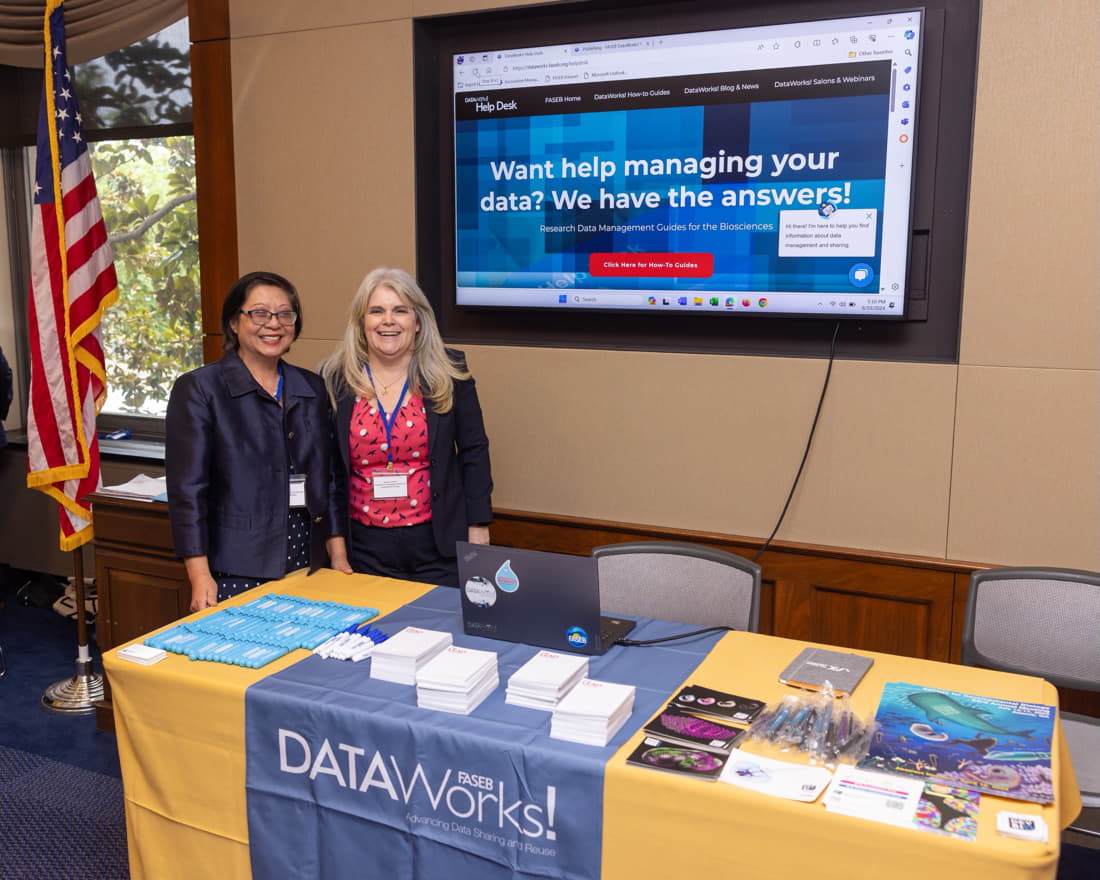Washington Update
Congressional Life Sciences Fair Showcases Science on Capitol Hill
By: Ellen KuoWednesday, June 12, 2024
On June 10, FASEB and the Coalition for Life Sciences (CLS) cohosted the annual Life Science Fair on Capitol Hill to engage members of Congress and congressional staff about the value of federal investment in the life sciences. The Congressional Biomedical Research Caucus made up of members of Congress who support basic and clinical biomedical research also supported the event, inviting other members of Congress to attend.
 Joining the group of exhibitors was the American Institute for Medical and Biological Engineering (AIMBE), American Society for Biochemistry and Molecular Biology (ASBMB), American Society for Cell Biology American Society of Human Genetics (ASHG), Association of Research in Vision and Ophthalmology (ARVO), Entomological Society of America (ESA), Genetics Society of America (GSA), The Jackson Laboratory, Population Association of America, Research!America, Society for Neuroscience (SfN), and the University of California, San Francisco.
Joining the group of exhibitors was the American Institute for Medical and Biological Engineering (AIMBE), American Society for Biochemistry and Molecular Biology (ASBMB), American Society for Cell Biology American Society of Human Genetics (ASHG), Association of Research in Vision and Ophthalmology (ARVO), Entomological Society of America (ESA), Genetics Society of America (GSA), The Jackson Laboratory, Population Association of America, Research!America, Society for Neuroscience (SfN), and the University of California, San Francisco.FASEB demonstrated its newly updated DataWorks! Help Desk, which provides how-to guides for the biological and biomedical research community to help them navigate and adopt data sharing policies and practices that will benefit other researchers in the future. FASEB’s DataWorks! Salon webinars were also advertised, where best practices in data management and sharing are discussed and experts in the field speak to researchers. The Society for Developmental Biology shared FASEB’s table to showcase the embryos of various mammals. ASBMB’s exhibit showed how researchers can visualize the efficacy of CRISPR through gel electrophoresis to develop gene therapies. Fundamental science researchers use gene editing techniques such as CRISPR-Cas9 to treat diseases, improve crops, and help living organisms survive in space.
Other exhibits included Research! America, which focused on scientific advocacy and the need for scientists to be involved in policy communications in medical and health research which helps to build trust between the public and scientists. ARVO highlighted the critical role of research funding in preventing blindness and treating debilitating vision disorders. At ARVO’s booth, participants experienced vision impairment simulators that replicate conditions such as glaucoma, cataracts, and diabetic retinopathy. GSA had a short demonstration involving DNA extraction using strawberries or saliva and told participants about the importance of funding scientific research.
The Population Association of America’s exhibit featured the National Health and Aging Trends Study. The study collects disability data in the field by participating in, for example, balance stand and grip strength tests. ASHG gave attendees a Phenylthiocarbamide or PTC tasting experiment to show that genetics influences the ability to taste the chemical and provided information on DNA origami and fact sheets on human genetics. The Jackson Laboratory did a taster poll to demonstrate genetics and had a pipette activity as well. SfN highlighted the critical role of research funding in advancing our understanding of the brain and central nervous system. Visitors to the SfN booth engaged with early-career researchers excited to show off their work and answer their questions around the brain. ESA’s booth featured the Megan Fritz lab at the University of Maryland. This lab is studying how human-driven modifications to landscapes impact insect genomes and result in phenotype changes in response to those selective pressures, focusing in particular on agricultural productivity and vector-borne disease transmission.
AIMBE had two booths featuring work on a rapid diagnostic test identifying known and novel bacterial, fungal, and viral pathogens hosted by Stephanie Fraley, PhD, Associate Professor at the University of California San Diego, Jacobs School of Engineering. Their second booth featured surgical devices for accelerating magnetic resonance image-guided brain surgery using Small Business Innovation Research funding led by Wally Block, PhD, Professor, Medical Physics and Biomedical Engineering at the University of Wisconsin, School of Medicine and Public Health.
Follow these social media hashtags from the event to learn more: #biology, #innovation, #research, #science, #health, #fundnih, #cls_advocates, and #medicalresearch.
FASEB is grateful to the Ad Hoc Group for Medical Research and the Coalition for National Science Funding for spreading the word about the event.
Photo credit: Anthony Bolognese